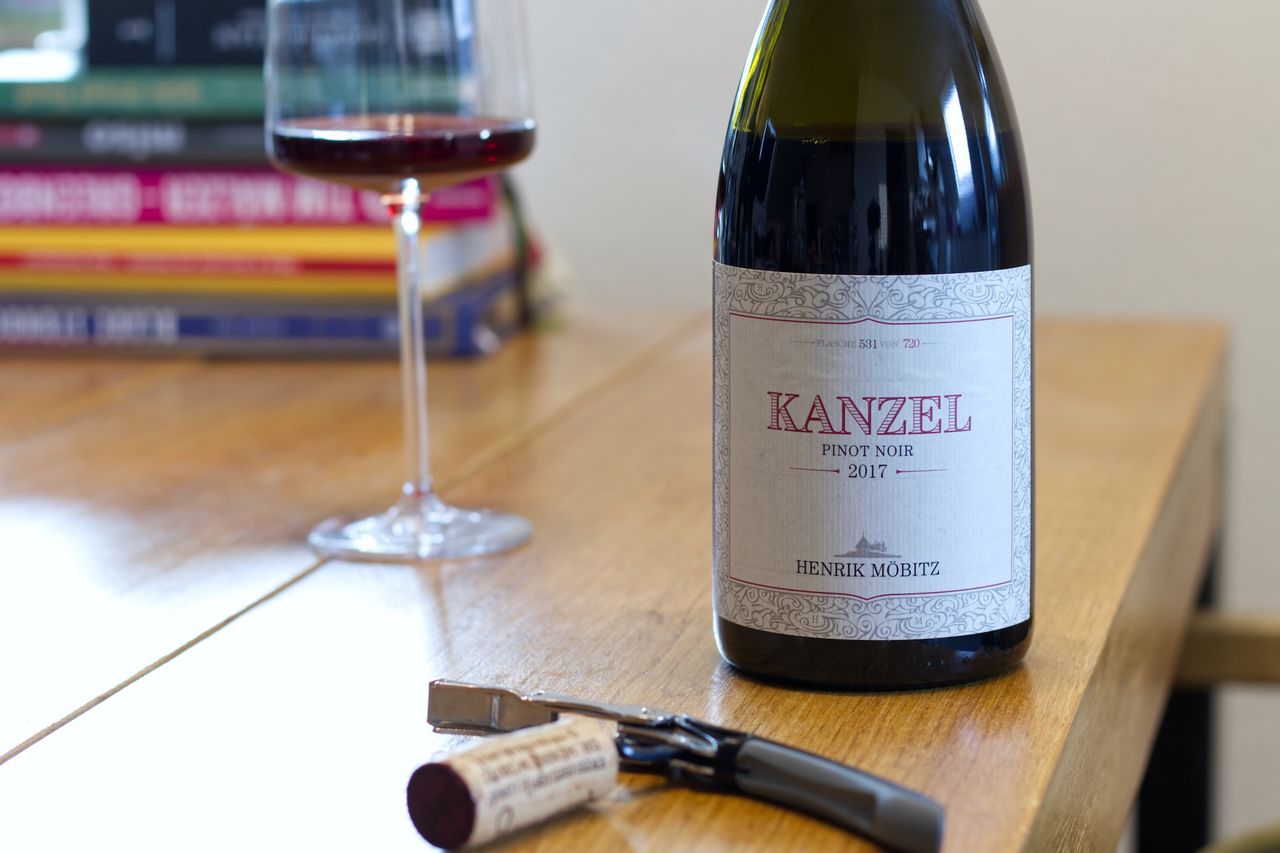Henrik Möbitz - Kanzel 2017
We conclude the small tour through Baden with a 2017 Spätburgunder Kanzel from Henrik Möbitz.

The final stretch is upon us in this small round of four bottles of Spätburgunder from Baden. As mentioned last week, this bottle also ties back to a previous wine. This time, however, it’s not the winemaker but the vineyard that creates the connection. This Kanzel from the Ehrenstetter Ölberg is something like the last of its kind, at least from Henrik Möbitz. Since the 2018 vintage, the wine still exists and can only be bought in Germany from Möbitz, but it’s now made by Wasenhaus, who took over the parcels starting with that vintage. It’s less than a hectare, for all thee sites together, the Kapelle, Köpfle, and Kanzel plots in the old Ölberg above Ehrenstetten. You often hear the term “garage winery” used to describe what Henrik Möbitz has been doing here alongside his career as a Ph.D. chemist. Tiny, run as a side job, and yet almost every time his name comes up, it’s accompanied by a sense of great reverence for the wines. And sometimes, a bit of frustration too. Too young, needs more air, best forgotten for at least five more years, maybe even ten. Or someone opened it too late, missed the window, it was tired or difficult. And in between, always praise. This doesn’t necessarily help when it comes to deciding the ideal moment to pull the cork yourself. The only reason I’m able to pull this cork is once again due to my erratic shopping habits. The family of my better half comes from this very region, right below the Ölberg, and I happened to stumble across the fact that some pretty good Pinot is produced here a few weeks before the last vintage was sold. So, I impulsively signed up for the newsletter. Why not give it a try? And since I tend to respond to emails quickly, I managed to get in early enough in the allocation to now have this bottle in front of me. In front of us, I should say. To top it all off, there’s now also a personal connection to this wine. Which makes deciding even harder—wait or drink. At least, until the waiter’s knife disappears into the cork, because once it’s open, it’s open, as they say.
The Spätburgunder is really dense on the nose, somehow compact and tightly wound. There’s spice, and for a few minutes, quite a bit of nail polish remover that slowly fades. There’s wood and fruit, but not much that feels inviting at first. You have to work hard to get through the aromas. Drinking it, though, is a different story. It’s juicy, with lots of fresh cherry and a solid dose of acidity. It’s got real power and finishes with somewhat scruffy tannins. What’s funny is that the tiny bit left in the empty glass smells much more open than the sip of wine did earlier. More fruit, darker notes, leather, old wood, and cold smoke. If you pour another glass, though, you hit a wall again right away. We leave it at that and hope for day two.
And honestly, maybe we should have done that a glass earlier. Because the first evening with this bottle was interesting, but also quite exhausting. All the more delightful is this glass now. Yesterday a caterpillar, today a butterfly, or something like that. The nail polish remover is completely gone from the nose. There are cherries, blackberry leaf, and spice. I wouldn’t describe the wine as cool or warm, and since “lukewarm” sounds stupid, let’s just leave it at that. It has gained real depth and has simultaneously opened up much, much more. Now it’s fun to stick your nose in the glass, not just when it’s empty. The wine was already juicy, but now it’s even juicier. There’s a lot of cherry juice, fine but also grainy tannins, and behind it, a mix of spice and calendula healing ointment. This calms me down a bit because I was afraid I’d have to convince myself that it tasted good because of the personal connection to the region, but I had no real enjoyment and no real post for this blog. Now I can like it because I genuinely like it, and I can write about it with ease. And since one night made such a difference to the wine, we’ll give it another night. It doesn’t need it, but my curiosity gets the best of me.
In the end, not much else happens, and if I didn’t know better, I’d only give this wine 2 or 3 years of age on its shoulders. Juicy, now rather cool, with fine fruit and great spice. Incidentally, it works excellently with pasta and red sauce. I like it a lot, really a lot, and it’s a more than worthy conclusion to these bottles from Baden. What I always think in moments like these, though, is how I would feel if a wine like this were presented to me in a restaurant. In its first-night state, it would only disappoint, and I have no idea how close a quick decanting could get to an extra night of time. Let’s not beat around the bush, the wine is still a bit stubborn. But now, that makes it better. On the first night, it kind of ruined it with how hard it was to get through. With wine, it’s always the case that the exact bottle you’re drinking won’t come around again. That’s part of the allure of wine, this irretrievability, where time and place matter so much. But with this bottle, that sense is even more final. And somehow, that makes the experience even more beautiful now.